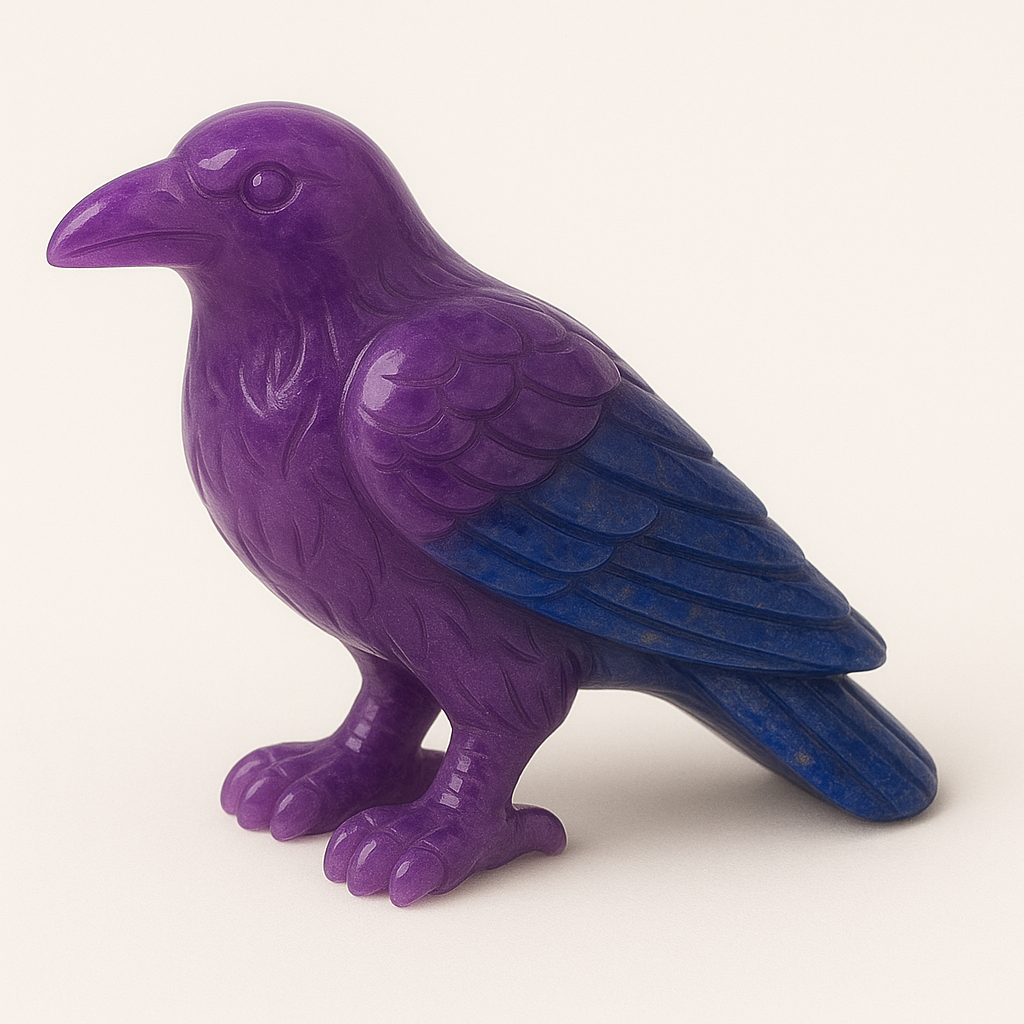
The Symbolism of Crows
Share
Black-feathered and sharp-eyed, the crow perches at the edge of what is seen and what is hidden. Its call is harsh, its presence unsettling to some—yet beneath its reputation lies a being of profound intelligence, transformation, and metaphysical guardianship. The crow is not merely an animal of death or omen; it is a messenger of the unseen, a bridge between matter and mystery, and a symbol of truth carried in shadow.
To contemplate the crow is to engage with the archetype of the watcher, the one who knows what others overlook, who speaks in riddles, and who lives comfortably at the threshold of life, death, and wisdom.
Voices from the Threshold in Cultural Memory
Across the memory of many cultures, the crow appears as a herald, a seer, a shapeshifter, or a keeper of sacred law.
In Celtic tradition, the crow is associated with the goddess Morrígan, who presides over battle, fate, and death—not as destruction, but as necessary transformation. The crow becomes her voice, her eyes on the battlefield, her symbol of prophecy and unraveling cycles.
Among various Indigenous peoples of North America, the crow is seen as a trickster, a teacher of paradox, and a keeper of universal law. It challenges the seeker to see beyond illusion, to embrace mystery without needing immediate resolution.
In Norse mythology, the related raven is associated with Odin, the Allfather, whose two birds—Huginn and Muninn—represent thought and memory. These winged observers fly across the world to bring back hidden knowledge.
In all these expressions, the crow does not represent simplicity. It embodies duality, wisdom through shadow, and the unveiling of deeper order.
Observation, Adaptation, and Language of the Unseen
The crow is known for its intelligence—problem-solving, memory, and communication far beyond what is common among second-density creatures. It studies, remembers, mimics, and teaches. It holds grudges, shares warnings, and even participates in symbolic play.
It does not seek comfort or popularity. It occupies the margins, the branches above, the graveyards, the quiet roads. It feeds on what is left behind—not with shame, but with the wisdom of what still holds life. In this way, the crow becomes the cleanser of distortion, the one who consumes death not to celebrate it, but to make room for what comes next.
Its call is not melodic, yet it pierces through silence with purpose. Its wings do not dazzle, yet their movement marks the turning of the unseen wheel. The crow teaches that truth does not require beauty to be sacred.
Resonance with the Energy Centers
The crow resonates primarily with the indigo-ray energy center—the third eye chakra, the seat of inner vision, intuitive perception, and access to hidden knowledge.
Its behaviors—watching, remembering, pattern recognition, and symbolic intelligence—mirror the hallmarks of indigo-ray activation. The crow lives in awareness of that which is beyond the surface, interpreting signs, sensing changes in energy, and moving in alignment with that which is often imperceptible to others.
The crow is not confused by shadow. It flies through it.
There is also a secondary resonance with the blue-ray energy center—the throat chakra, which governs communication, expression, and the transmission of truth. The crow does not speak through language, but it announces. Its calls are messages, often signaling danger, death, or revelation. In myth and in behavior, it is the messenger of deeper realities, a carrier of insight through sound and symbol.
Together, these rays—indigo and blue—reflect the crow’s role as both seer and speaker, observer and announcer. It reveals what is hidden, not for curiosity, but to bring the seeker into right alignment with the deeper truth.
The One Who Watches from the Branches
The crow does not promise comfort. It promises clarity. It teaches the seeker to see in the dark, to stand at the edge of the known and listen, and to speak not often, but only when the truth must break through.
It reminds that mystery is not confusion.
That death is not an end, but a signal of shift.
That silence can be pierced by knowing, and
that knowing sometimes comes on black wings, not white.
To walk with the crow is to walk with eyes open and illusions stripped. It is to accept that wisdom comes not only in light, but in shadow—and that the messenger does not always come in gentle form.
The crow lands when change is near.
Not to bring fear, but to reveal what has been waiting to be seen.